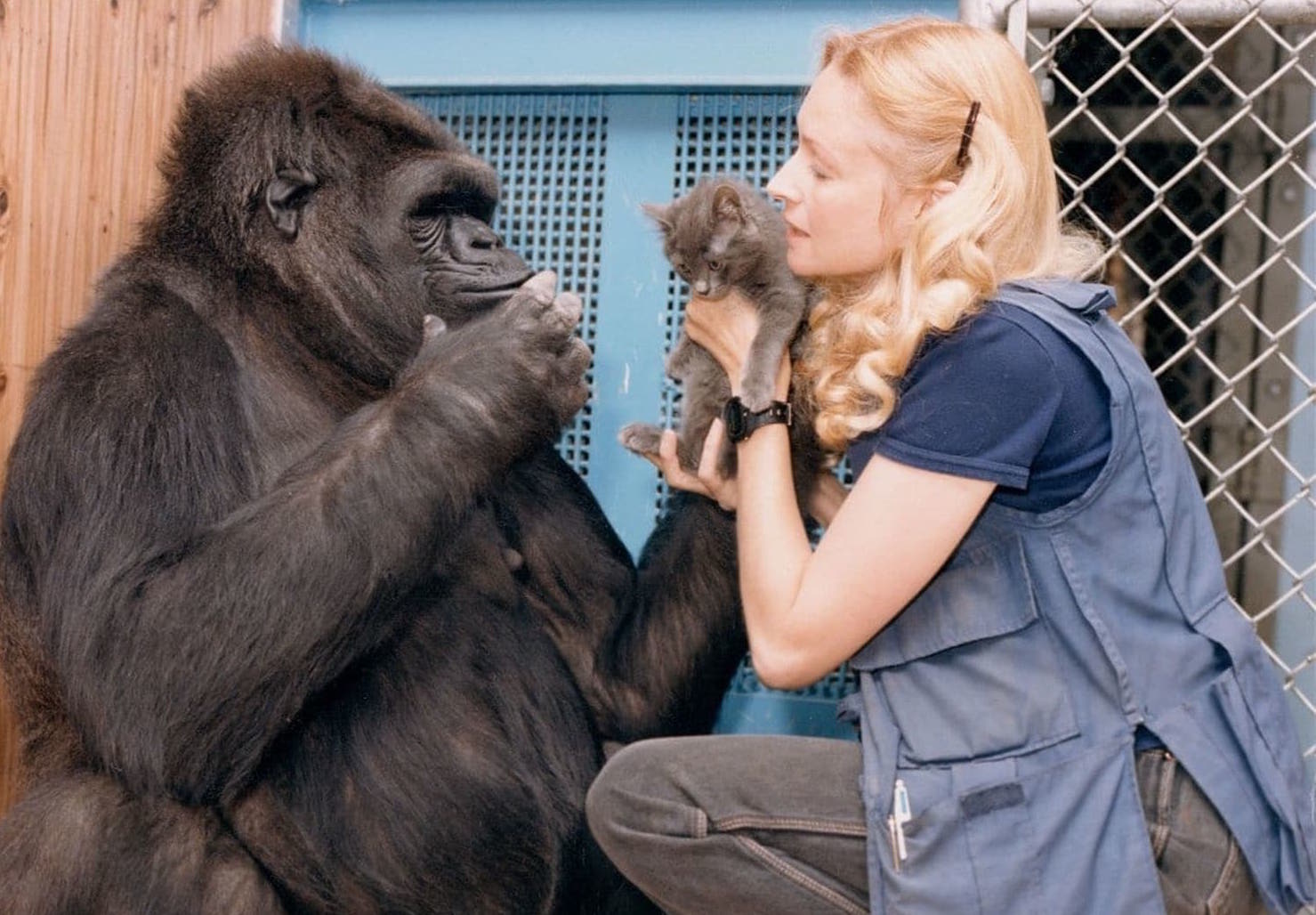
How Koko the gorilla changed how we view animal intelligence
Koko, the western lowland gorilla who died late last week, surprised and inspired the public throughout her lifetime. With her recent passing comes an opportunity for us to continue to explore and expand our knowledge of animal intelligence and sentience.
The founding of the United States brought about the first animal cruelty law passed in 1641 by the Puritans of Massachusetts. This law identified animals as “brute creature[s]”, reflecting the largely held belief at that time that animals operated simply as machines. Animal cruelty was only illegal against animals owned by another person because animal cruelty was seen as destroying someone’s property.
Since then, our understanding of animal intelligence and emotional capabilities has grown. Koko was a huge part of this change in viewpoint. Since “Project Koko” began in 1972, she challenged our ideas on what animals are capable of.
Not only did Koko know over 1,000 signs, displaying an intelligence level of a human toddler, but she also showed a broad range of emotions, previously only assumed to be held by humans.
Koko expressed grief at multiple points in her life. When her pet cat died, Koko signed “cat, cry, have, sorry, Koko, love”. Her trainers noted that she seemed upset by the kitten’s death for years afterwards. She also regularly used emotionally charged words such as happy, sad, afraid and mad.
Koko has even shown self-awareness throughout her lifetime by using personal pronouns, discussing her own emotions and making value judgments. Her most famous example of self-awareness came from a photograph she took of herself which was featured on the cover of National Geographic. In fact, Koko was the first gorilla to pass the mirror self-recognition test which researchers use as one indicator of self-awareness.
Some have questioned the results of Project Koko. Critics say that researchers may have solicited certain responses from Koko. Even if this was true, Koko’s ability to interpret the researchers’ desires shows a high level of cognition.
Western lowland gorillas are far from the only species that display human-like features. We now know that elephants can grieve the death of their friends and even visit the grave sites after the death. Cows form close friendships with other cows. Even pigeons have been able to sense space and time, as we recently reported.
If animals are far more intelligent and emotional than we previously predicted, it brings about many questions. One question that has been making headlines in the news is whether these sentient species can legally be defined as persons.
The Nonhuman Rights Project is currently working to secure legal rights for great apes, elephants, dolphins and whales. They argue that these species display a level of self-awareness and autonomy that warrants legal rights.
The argument is certainly intriguing. Some animals, such as Koko, have the intelligence level of a human toddler.
People possess certain qualities such as self-awareness, compassion and grief but science continues to show that we may not be the only ones with these qualities. Even people who cannot grasp these qualities, such as comatose and infant humans, are considered people.
The idea has gained traction in other countries. An Argentina court recently ruled that an orangutan held in captivity has the legal right to life, liberty and freedom. The orangutan will now be sent to a sanctuary or another home outside of the zoo.
While its not clear whether Project Koko has taught us whether gorilla’s deserve legal personhood, she has certainly created a lasting impact on our understanding of animal sentience.
—
By Brianna Lynne, Earth.com Contributing Writer
Image Credit: Ron Cohn, The Gorilla Foundation












